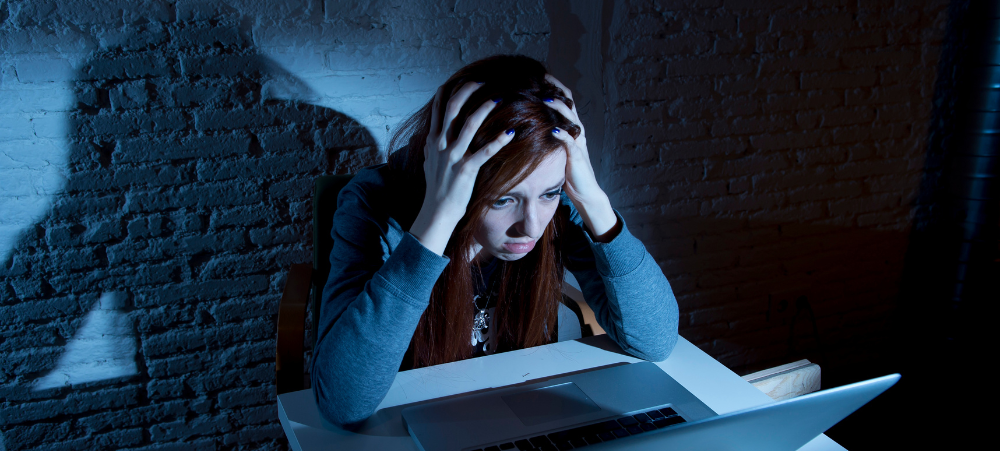By Janine Shamos
All teens are moody; all teens are rebellious; all teens are angry and irritable; all teens are depressed. Aren’t they? Yet most of us still find it staggering that a teen could take his or her own life. Shouldn’t the world be filled with hope and possibility as a teen – not despair so deep that ending your life seems the only option?
Teen suicide is a reality for many families. 9.5% of all teen deaths in South Africa are due to suicide and suicide as the fastest growing, and second leading, cause of death in the 15 – 24 age group. The National Youth Risk Survey found an alarming number of high school teens were depressed and suicidal – over 20% had considered suicide in the last month. But despite its prevalence, teen suicide is still shrouded in myth and misconception. It’s crucial we break the myths – there is no better way to prevent teen suicide.
The South African Depression and Anxiety Group (SADAG) runs the only toll-free suicide crisis line in the country (0800 567 567) and the only teen suicide prevention programme in schools. “The Suicide Shouldn’t be a Secret programme now eleven years old, is aimed at educating teens and teachers about the warning signs, facts and interventions of teen suicide”, says SADAG’s Cassey Chambers. The programme has been implemented in schools across the country in rural, per-urban and urban schools.
Teen suicide is a hard thing to think about, and many people turn a blind eye hoping it’s a problem that will solve itself. LOTTO, has taken the bold step of supporting SADAG’s teen suicide prevention initiative at 30 more high schools across Gauteng. SADAG will be talking to the teens as well as their teachers to demystify the issue of teen suicide. “Teachers have a lot of face time with their students and often see problems before the parents do”, says Chambers. “Too often they don’t recognise behaviour changes as potential problems and don’t know what to do or who to turn to for help. The programme offers that insight and quick access to assistance.”
The SADAG programme is open to applications from schools who feel they are in need of such intervention. “If you have students who are at risk or you feel that prevention is key, let us know”, says Chambers. Schools can call Clare or Adri on 011 262 6396 for more information. “I thought that teen depression wasn’t an issue in our school, I thought our kids were ‘fine’ – until we had a Grade 10 student kill himself. It was so out of the blue, so sudden – and he was not the kind of person I would have thought would ever be depressed or want to take his own life. We all need educating”, says High School Educator Dianne.
The myths surrounding teen suicide are numerous – and dangerous. “There is still a lot of ignorance – and prejudice – about suicide generally”, says Chambers. “Not only does this mean that those in need of help, don’t ask for it because of fear and shame, but also those who have lost loved ones due to suicide have a far tougher road to acceptance and healing.”
US Researcher, Dr Thomas Joiner, refers to suicide as “the most stigmatised of human behaviours.” Many people mistakenly believe that you can’t intervene or make a difference – that a teen who wants to kill themselves will just keep trying until they get it right so ‘why bother’. “I used to think there was nothing you could do, then I heard a SADAG counsellor use the analogy of a heart attack. We don’t just resign ourselves to a loved one having repeated heart attacks until they die, we act and intervene. We need to do the same for teens who need psychological help”, says High School teacher Prudence. One of the biggest and most damaging myths is that if people want to die by suicide, we can’t stop them. The truth is that even teens who are serious about killing themselves can be helped. In the majority of cases, teens don’t want to die – but they see no other alternative. Providing another ‘way out’, another way to ease the pain is often the answer. Many adults are scared to talk about suicide, afraid to bring up the subject in case it makes the teen think about it. This isn’t true. “Simply talking about suicide won’t make your teenager more likely to try it”, says psychiatrist Dr Frans Korb. Frank conversation about suicide could have quite the opposite effect – and save a life.
Many parents, teachers and peers believe that teens are all talk. “My friend used to always tell me she wanted to die, and that she was going to kill herself. I never took her seriously”, says 17-year-old Naomi. SADAG warns that up to 80% of teens give some kind of warning prior to a suicide attempt or completed suicide so, while your child may not always do what he or she says (like clean their bedroom), when it comes to talk of death and suicide – take it seriously. Most teens show a number of warning signs. “The key is knowing what to watch for and this is the power of the Suicide Shouldn’t be a Secret programme”, says Chambers. Teenagers who drink a lot, use drugs, run away from home, withdraw from friends, write or draw pictures about death, have trouble at school or go through a break-up may all be at risk for suicide. “There are many warning signs and the SADAG programme helps people understand what these signs mean and helps them put all these signs and triggers into context”, says Chambers. SADAG is open from 8am to 8pm 7 days a week on 0800 21 22 23, or visit www.sadag.org.
The programme answers questions like: “My teen listens to metal – they sing about death and sometimes suicide. Does my son’s taste in music put him at risk for suicide?” No, there is no link between listening to metal or rock music (or any other kind of music) and suicide. Although heavy metal could affect an already emotionally disturbed teen struggling with feelings of alienation, for most teens the words and music have a more positive effect and helps them get rid of their anger and manage their emotions. What about drugs and alcohol? Teens who drink and use drugs are more likely to commit suicide. Alcohol changes a teen’s brain chemistry, and may cause him or her to become depressed; an already depressed teen who turns to alcohol can feel even worse. And alcohol weakens a teen’s ability to make good choices. A study that appeared in the journal “Pediatrics” showed that teens who started drinking as a pre-teen were three times more likely to attempt suicide than their non-drinking peers.
Nobody wants to think that their child could be at risk for suicide. We all think it’ll only happen to someone else, at some other school, in another community. But assuming that a teen is above risk could be a deadly mistake. Teens feel things intensely, they react. Suicidal people aren’t insane. Their emotions are in turmoil and talking about it – connecting – can be lifesaving. “Talk to your teen. Talk all the time. Even if he acts like he doesn’t want to. Just being there, means there’s a way out. If you aren’t there to listen, you’ll miss it”, says Chambers.
Teen suicide is a very real problem and one that needs us to act – now – to try and curb. Stigma gets in the way of prevention. “We need to change our thinking – suicide is not easy, cowardly, selfish, or vengeful. Suicide is not the easy way out chosen by weak people. And it is a problem in teens”, says Dr Korb.
Teen suicide is causing the premature deaths of 9.5% of South Africa’s teens. This is the programme that aims to work with schools in order to prevent the preventable.
We understand that there are many aspects that encompass a Mother, Father or Child and strive toward providing resources and services that accommodates this.
Our content is aimed to inform and educate families on issues starting from pregnancy through to the challenges of the teen-age years.
- Tiny Toons Looniversity Returns: Meet the Voice Behind Plucky and Hamton! - December 12, 2025
- From Pain to Possibility: Panado®’s New Marketing Campaign, Highlights The Joy Of Pain Relief - December 10, 2025
- Feeding Unicorns by Jeni-Anne Campbell: A bold new book for business leaders who care - December 9, 2025





